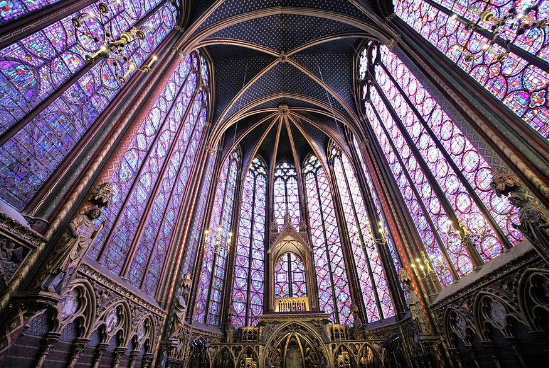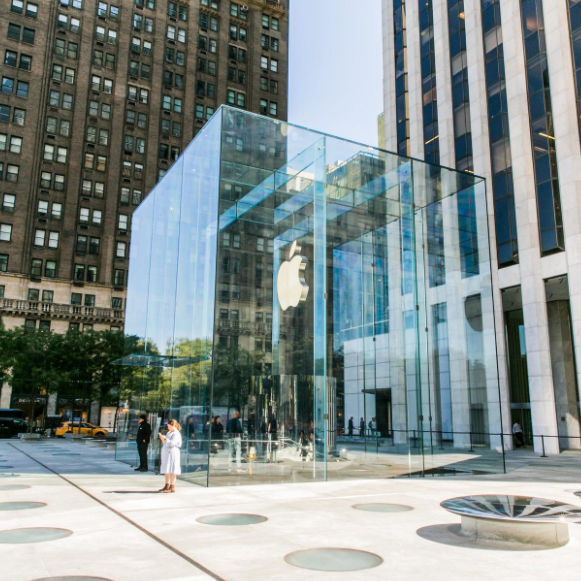THE HISTORY OF THE USE OF GLASS IN INTERIOR AND ARCHITECTURE
Glass has been a staple material in architecture and interior design for centuries. Its use dates back to ancient civilizations such as the Egyptians and the Romans, who used glass primarily for decorative purposes. However, it was not until the Industrial Revolution that glass production became more advanced, allowing for its wider use in construction and design.
One of the most significant architectural achievements in the use of glass is the Crystal Palace, a cast-iron and glass building built for the Great Exhibition of 1851 in London. Designed by Joseph Paxton, the Crystal Palace was the first large-scale structure to use glass extensively, and it paved the way for modern architecture as we know it today. Its innovative use of glass allowed for natural light to flood the interior, creating a bright and airy space that was revolutionary for its time.


Another notable example of glass in architecture is the glass skyscraper. The first skyscraper to use glass extensively was the Lever House, designed by Skidmore, Owings & Merrill in 1952. The building’s curtain wall was made entirely of glass, which allowed for uninterrupted views of the city and a more transparent façade. This marked a shift in architecture, as buildings began to prioritize transparency and openness over the solid, heavy facades of the past.
In interior design, glass has been used for centuries for its decorative properties. Stained glass windows, for example, were commonly found in churches and cathedrals during the Middle Ages, where they were used to tell biblical stories and create a sense of awe and wonder. Glass has also been used in furniture design, such as glass coffee tables and glass shelves, which provide a sleek and modern aesthetic.


Today, glass is used in architecture and interior design in countless ways. Modern glass technology allows for a variety of colors, textures, and finishes, making it a versatile material for any design style. Glass can be used to create walls, doors, windows, and skylights, allowing for natural light to flood interiors and create a sense of openness. It can also be used for decorative purposes, such as etched or frosted glass, which adds texture and visual interest to a space.
Glass has also been used for energy-efficient purposes in architecture. The development of low-emissivity glass coatings and insulated glass units has allowed for better thermal performance and reduced energy consumption in buildings. This has led to the emergence of green building practices, where sustainable materials and energy-efficient design are prioritized.
In addition, glass has been used for artistic expression in architecture and interior design. The use of colored and patterned glass can create unique visual effects and add a sense of whimsy to a space. For example, the Sagrada Familia in Barcelona, designed by Antoni Gaudi, features colorful stained glass windows that create a stunning display of light and color inside the cathedral.


Furthermore, glass has been used for structural purposes in modern architecture. The use of structural glass allows for uninterrupted views and a minimalist aesthetic. Examples of this can be seen in the Apple Store on Fifth Avenue in New York City, which features a 32-foot glass cube as its entrance, and the Guggenheim Museum in Bilbao, which has a curved glass atrium that serves as the main entrance.


Overall, the use of glass in architecture and interior design has come a long way since its early beginnings. Its versatility, transparency, and energy-efficient properties have made it a popular material for designers and architects. As technology continues to advance, we can expect to see new and innovative uses of glass in the built environment. Glass used to be a precious material due to the lack of technology and before people didn’t have as many choices in glass as they do now. Today you can choose for yourself any glass product for your home or office, whether it is a glass partition, a glass door or a glass railing system. You just need to make a call to order and install a glass product.
OUR CONTACTS
- (347)860-7999
- sales@glass-desire.com
- 1951 68th street, Brooklyn NY 11204
- 9:00AM - 6:00PM | Monday - Friday
